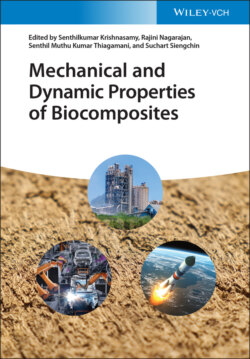Читать книгу Mechanical and Dynamic Properties of Biocomposites - Группа авторов - Страница 21
1.4.1.6 Corn Husk/Kenaf FRP Hybrid Composites
ОглавлениеSeveral agricultural wastes such as rice straw, corn husk, and rice husk form a huge quantity of raw natural fibers that are used in polymer composites as materials for reinforcement. Corn husks contain fibers that are rich in cellulose. They are the thin and leafy sheaths that surround corn cobs [33]. Kenaf fiber is important in paper as well as other industrial sectors, as a fiber source.
Kwon et al. [34] used PLA matrix and prepared kenaf fiber and corn husk flour hybrid biocomposites, using a constant fiber to matrix ratio of 30 : 70 by weight (Table 1.6). Different kenaf/corn husk flour ratios were examined. Before and after extrusion, the aspect ratio was measured for kenaf fibers and its influence on the mechanical behavior was investigated. The result showed that the aspect ratio post‐extrusion had no influence on the values predicted from the Halpin–Tsai equation. Note that the Halpin–Tsai model for predicting elastic response of composites assumes that there is no fiber–matrix interaction and works on the basis of the orientation (geometry) as well as elastic behavior of the matrix and the fibers. They found out that the variation in the Young's modulus of fibers affected the transfer of stress from the matrix to the fiber and reported that a factor of control to optimize mechanical behavior in hybrid biocomposites could be the reinforcements' scale ratio in various aspect ratios.
